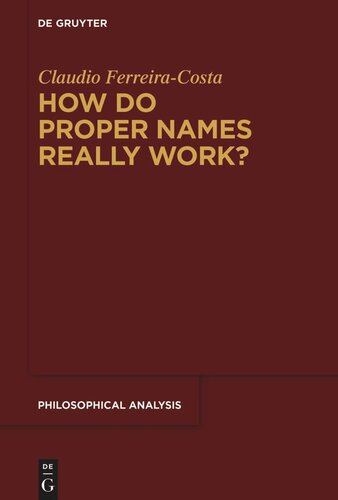

Most ebook files are in PDF format, so you can easily read them using various software such as Foxit Reader or directly on the Google Chrome browser.
Some ebook files are released by publishers in other formats such as .awz, .mobi, .epub, .fb2, etc. You may need to install specific software to read these formats on mobile/PC, such as Calibre.
Please read the tutorial at this link: https://ebookbell.com/faq
We offer FREE conversion to the popular formats you request; however, this may take some time. Therefore, right after payment, please email us, and we will try to provide the service as quickly as possible.
For some exceptional file formats or broken links (if any), please refrain from opening any disputes. Instead, email us first, and we will try to assist within a maximum of 6 hours.
EbookBell Team

4.1
70 reviewsFor fifty years the philosophy of language has been experiencing a stalemating conflict between the old descriptive and internalist orthodoxy (advocated by philosophers such as Frege, Russell, Wittgenstein, Strawson, and Searle) and the new causal-referential and externalist orthodoxy (mainly endorsed by Kripke, Putnam, and Kaplan). Although the latter is dominant among specialists, the former retains a discomforting intuitive plausibility. The ultimate goal of this book is to overcome the stalemate by means of a non-naïve return to the old descriptivist-internalist orthodoxy. Concerning proper names, this means introducing second-order description-rules capable of systemizing descriptions of the proper name’s cluster to provide us with the right changeable conditions of satisfaction for its application. Such rules can explain how a proper name can become a rigid designator while remaining descriptive, disarming Kripke's and Donnellan’s main objections. In the last chapter, this new perspective is extended to indexicals in a discussion of David Kaplan’s and John Perry’s views, and of general terms, in a discussion of Hilary Putnam’s externalism.